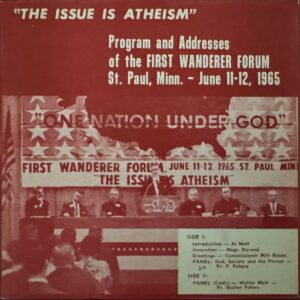+ A.M.D.G. +

CATHOLIC CONGRESSES AND PASSION PLAYS
Catholic congresses and Passion plays contribute largely in the present day to the revival of faith in Christendom.
1. Catholic congresses are public meetings of Catholics for the purpose of taking counsel together and passing resolutions suited to the times and to the present needs of the Church.
These congresses are either general or provincial, according as the Catholics of a whole kingdom or only of a single State take part in them.
Ever since the year 1848 the Catholics of Germany have held annual congresses in one or other of the chief towns of the land. In other countries their example has been followed; general congresses are now a common occurrence both on the continent of Europe and also in England and the United States of America. Provincial meetings of a local interest are also frequently held in various places.
The object of Catholic congresses is not in any wise to control or take part in the government of the Church, but only to support those whose office it is to govern her.
The bishops alone possess authority to rule the Church of God. Hence those who proposed and arranged these assemblies of Catholics, remembering the saying of St. Ignatius of Antioch: “Let nothing be done without the bishop,” took no steps without previously obtain ing the sanction and blessing of the Holy Father and of the bishops on their scheme. Nor have these congresses ever interfered with the direction of ecclesiastical matters; they have merely been instrumental in carrying out Christian principles; their members are a militia under episcopal command. Consequently the bishops have always highly approved of congresses and attended them in person.
These public meetings of Catholics are of great utility to the Church; they have been instrumental in founding sodalities adapted to meet the needs of the day, in promoting unity and concord among Catholics, in inspiring them with courage and confirming their convictions, in increasing the prestige of the Church, and gaining for her greater liberty of action.
Every one who has been present at a Catholic congress will have perceived what enthusiasm is evoked by the forcible addresses of the different speakers, how faith is kindled inwardly and manifested outwardly. And from the remarks of the anti-Catholic press, it may be seen how these congresses win respect even from the enemies of the Church by their vigorous protests and energetic action. The work of these congresses has been said to be to pull down the edifice of modern paganism stone by stone, and raise in its place a noble basilica.
2. Passion play is the name given to the portrayal of Our Lord’s Passion, and other biblical events in a series of tableaux vivants.
In the Middle Ages, before the invention of printing had placed Holy Scripture within the reach of the people, it was customary to present to their view the chief events of Our Lord’s life in theatric representations. For instance, St. Francis of Assisi obtained the Papal permission to construct a stable of brushwood and moss in the midst of a pine-wood. In it he placed a real manger in which was laid an image of the divine Infant, while figures representing Mary and Joseph stood beside it. A real ox and an ass were tied up to a stall outside the stable; inside an altar was erected, at which at mid night the Christmas Mass was solemnly celebrated, St. Francis serving as deacon, to the great edification of the crowds who nocked from all parts round to witness the unwonted spectacle. From that time forth the custom of making a crib in churches began to prevail. In the Middle Ages, pains were taken to make representations of this description as picturesque and true to nature as possible; scenes from the life of Our Lord or other scriptural personages were represented on the stage in tableaux. The subject of these religious dramas or miracle-plays as they were called, was generally adapted to the season of the ecclesiastical year in which they were performed. At first they were enacted in the church, the actors speaking in Latin; later on they were given in the open air, and the vernacular was used. In the fourteenth century these sacred dramas were customary in al most every village in France and Germany, but owing to abuses having arisen, they were strictly prohibited by the Holy See. In 1633 they were however revived at Oberammergau, in Bavaria, in consequence of a vow made by the inhabitants to perform a Passion play every ten years if they were delivered from a pestilence which was ravaging the village. This Passion play, as well as two others in the Tyrol, has acquired a world-wide renown. It is performed with wonderful skill by the peasants, and in a spirit of heartfelt piety and recollection. Experience proves that far from being, as some allege, a profanation of holy things, the representation of the solemn scenes of Our Lord’s sacred Passion has the effect of impressing and touch ing the spectators, inspiring feelings of devotion, and elevating the heart so that the actors are forgotten in the entrancing interest of the scenes enacted. Besides, the gracious answer to the petition of the people of Oberammergau ought to silence the objector, for that cannot be reprehensible of which God manifests His approval in so signal a manner.
« Previous Section
MISSIONS AND RETREATSNext Section »
RELIGIOUS ASSOCIATIONS
This article, CATHOLIC CONGRESSES AND PASSION PLAYS is a post from The Bellarmine Forum.
https://bellarmineforum.org/bf_catechism/the-catechism-explained/part-iii-the-means-of-grace/iv-prayer/the-principal-devotional-exercises/catholic-congresses-and-passion-plays/
Do not repost the entire article without written permission. Reasonable excerpts may be reposted so long as it is linked to this page.
